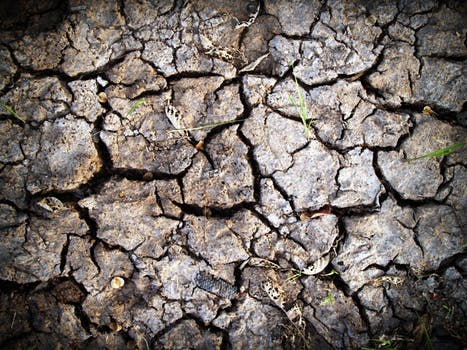Taking care of your flower or vegetable garden is a pass time for many as some consider it therapeutic whilst others do it as a hobby.
No matter whether it is a pss time or a hobby, gardening is indeed a central aspect of any house. A strategically place pot plant in a room can make a small house look roomy and spacious, it can transform a barren landscape or an eyesore into a relaxing part of the whole building.
Taking the necessary steps and ensuring that your garden is well kept will see that caring for your flower and vegetable garden is not a mammoth task.
Plant care and garden
There are several things that can be done to the garden during the dry spell or season.
Assess your garden
There are certain plants that can survive a dry spell and which also improve the landscape during this season. Identify areas or plants that need to be saved. Once you have done this, you will need to concentrate your attention to these areas and consider watering them regularly.
The roots of various plants grow at different depths and the trick is to identify then apply just enough water to moisten the roots by focusing water into these areas you have identified. This keeps the trees and canopy green.
Know your garden
Irrigate your garden slowly. Slow soaking limits run off and encourages plants to develop deep root systems that are better able to tolerate droughts. The heavier the soil, the more important slow soaking is in preventing runoff. To minimise evaporation, it is best to irrigate in the early morning or in the evening.
Build water basins
This is done by building or gathering soil in a mound around the plant. This is known as soil berm. At the base of the mound is a small trough which you can fill with water and the water will then be soaked up.
Reconsider cutting our grass
Longer grass will shade the soil and reduce evaporation. This doesn't mean not cutting the lawn however you could leave more green to show and the grass a little bit longer as opposed to the usual length.
Apply mulch
Spread a layer of mulch over the soil around plants as mulch reduces evaporation, insulates the roots from extreme temperature change and helps prevents weeds which can choke out much needed water.
Use Terra-cotta pots
Using the terra-cotta pots is advisable as it is good at water retention. For extra insulation, put smaller pots inside the big ones or bury them up to their rims in the ground. If it is hard to locate terra-cotta pots, an better alternative is the plastic ones.
Plant close together
When water is scarce, space your plants close together as possible. You will find that water is saved as they are closer especially during time of watering and that the plants act as a natural shade and wind barrier for one another. In addition to this, planting closer together will see less weeds as compared to when the plants are far apart.
Items to keep around the house for drought season
-
Root irrigator - this hose-end device has a needlike shaft that injects water into the ground, directly irrigating the rots and seeing no water lost to evaporation.
-
Sampling rod - this device is a metal tube which can be shoed into the ground. When pulled out, twist it back and it shows a cross section of the soil and shows how wet or dry the soil is which in turn tells you whether or not to water the soil now or not.
-
Soaker hoses - porous hoses which all water to seep through their length. These special hoses can be run along flowers and shrubs or even along hedges and vegetables to allow plants to soak up the water.
-
Rain tank/barrel - during the normal weather, a lot of rain will fall. It is best to catch this rain and store it for the dry season.
Flowering plants for your garden
It is always essential to know your climate before you undertake any gardening.If drought and dry spells have become common in your province over the past few years, it is important to know which plants are best suited for the climate. It is a time consuming effort which could see you in the end losing alot of money.
Imagine trying to plant a water lily as your centre piece in your garden if you are located in one of PNG’s drought prone areas. This would mean that your water bill and consumption would be high as you would have to ensure that your pond is always full. Therefore, it is good to know which plants are well suited for dry weather.
Cotinus along with Buddleia are good examples of plants that are best suited for dry weather. They grow well in low water levels and shut their system down and can tolerate dry periods for some time. The two plants have adapted t such weather conditions by growing smaller leaves which are closer together.
Portulaca or Purslane is another plant which is found in the tropics and warm temperature regions. There are between 10 - 400 different species of this plant which is colourful and it is also considered as a pest by some countries.
Other plants that grow well in dry weather include Bougainvillea, Agave as well as the Blanket flower.
Many gardeners think that you can not produce good produce without extra water but some plants are surprisingly drought tolerant. Herbs that produce aromatic oils are the ones to benefit the most as drier conditions mean more oil. Climbing French beans are another egetable that adapts well to the dry weather as compared to the usual runner beans.
Lettuce, spinach and even sweet potatoes if well watered and cared for also produce tastier produce during this dry weather period.
Alternative water source for the garden
As the dry weather continues, many local authorities will place restrictions or bans on water usage. As such, this would at times mean that one will have to consider using grey water. Grey water is water that has been used around the house such as in the washing machine, bath, shower or for washing up.
Grey water does not store well and can start to stink if kept stagnant for long. It is best used within 24 hours to prevent the spread of bacteria. Never use water from toilets or dishwashers or use water that you know contains bleach or other harsh chemicals which can be bad for the plants.




Comments